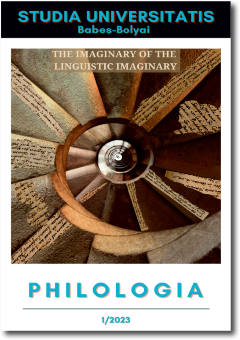SET PHRASES WITH THE LEXEME ‟THURSDAY”. CONSIDERATIONS REGARDING THE LINGUISTIC AND CULTURAL IMAGE OF THE DAYS OF THE WEEK IN THE POLISH AND ROMANIAN FOLK CALENDAR
SET PHRASES WITH THE LEXEME ‟THURSDAY”. CONSIDERATIONS REGARDING THE LINGUISTIC AND CULTURAL IMAGE OF THE DAYS OF THE WEEK IN THE POLISH AND ROMANIAN FOLK CALENDAR
Author(s): Joanna PorawskaSubject(s): Language studies, Lexis, Semantics, Comparative Linguistics, Cognitive linguistics, Cultural Anthropology / Ethnology, Phraseology
Published by: Studia Universitatis Babes-Bolyai
Keywords: ethnolinguistics; Polish and Romanian comparative study; folk calendar; Thursday;
Summary/Abstract: Set Phrases with the Lexeme ”Thursday”. Considerations Regarding the Linguistic and Cultural Image of the Days of the Week in the Polish and Romanian Folk Calendar. Ever since the 1970s and 1980s, the relationship between language and culture has been a topic of broad interest for linguists, which undoubtedly contributed to bringing linguistics closer to humanities. The prefix ethno- contained in the term ethnolinguistics used over the course of this article should be interpreted as an abbreviation for ethnology, a term synonymous with the American anthropology. Describing so-called language stereotypes is one of the main topics of interests for what we generally call “Polish cognitivism”, conducted for years by Polish linguists. The term stereotype itself is used in its original Lippmann's meaning as a schematic and one-sided “picture or image in a person’s mind” of a phenomenon, human being, or thing and at the same time an opinion assimilated from the environment even before discovering the object itself. In Polish language and culture, days of the week were not personified. Therefore, to a philologist-linguist who is comparing the two languages, the data derived from folklore will be a “weaker” starting point than “hard” linguistic confirmations (fixed structures). My goal is to offer a Polish and Romanian comparative analysis which is supported by ethnological or historical data.
Journal: Studia Universitatis Babes-Bolyai - Philologia
- Issue Year: 68/2023
- Issue No: 1
- Page Range: 107-120
- Page Count: 14
- Language: English

